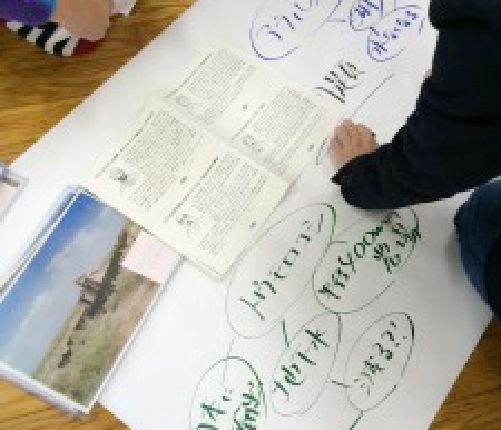Students will learn about language mechanisms in communication, prehistoric societies,
multicultural coexistence, welfare in society, and religious views through the prism of
sociology, cultural anthropology, and communication studies.
What you’ll consider in this area
People have formed societies in the course of living their lives. Societies are born from the process of two or more people adjusting their thinking and behavior through mutual negotiation and communication, and continue to exist dynamically as a result of people forming and deepening their awareness of each other.
Communication takes place under a variety of circumstances. Accordingly, differing experiences, memories, aspirations, and desires intermingle, and, through these, approaches are formed, confirmed, and altered as links are forged between people and the environment, culture, society, history, politics, economy, religion, and arts around them, underpinned by what people have in common with each other.
To enable us to live better lives as social entities, we need to look at this complex, diverse array of matters and understand how they manifest within us and within the various groups and organizations that we comprise, and also how they are used, what makes them possible, and what has made or is making them more complicated. Based on this understanding, it is then vital to consider measures for improving the societies and world in which we live. We must also think about what is good for us and for society in the first place, and what constitute good approaches for us as individuals, as well as for the various groups, organizations, and societies that we form.
What you can learn in this area
In the People and Society area, you will learn about these complex, intersecting problems and explore the answers, approaching these issues from a range of perspectives, including social philosophy; communication theory; health, welfare, and development theory; international cooperation and human rights theory; cultural anthropology; and prehistory and archeology.
For example, society has faced fundamental problems that were difficult to solve through human intervention. Problems relating to such matters as coexistence, education, peace, and justice could be described as challenges that have existed since the dawn of history. How can humans live together? How should they be educated? How can we maintain peace and justice within a state or between states? You will consider these questions from the perspective of social philosophy.
Our day-to-day communication mainly takes place through the medium of language. However, opportunities to properly consider the mechanisms and functions of words, languages, and communication are limited. What do we need to take an objective look at language and communication, for which language is a tool, and to understand their mechanisms and engage in effective linguistic communication? You will learn about these matters from the perspective of communication studies.
In modern societies with diverse values and a mixture of races, ethnic groups, religions, cultures, traditions, and genders, how can we pursue multicultural coexistence and well-being? You will gain an overview spanning the period from the birth of humanity to the present day and consider approaches to the society of the future from a wide-ranging perspective, taking into account perspectives from the fields of social welfare, political science, cultural anthropology, and archeology.

Features of this area
In the People and Society area, you will consider how we can live better lives as social entities in today’s society and world, what would make today’s society and world better places, and what we can do to achieve this, examining these questions together from a variety of academic perspectives and also from viewpoints that transcend the boundaries between those disciplines. While interdisciplinary and multidisciplinary approaches are a feature of ISI as a whole, it would be fair to say that such approaches are the most distinctive feature of the People and Society area in particular. In addition, you will be expected to add approaches that transcend the boundaries of time and space.


